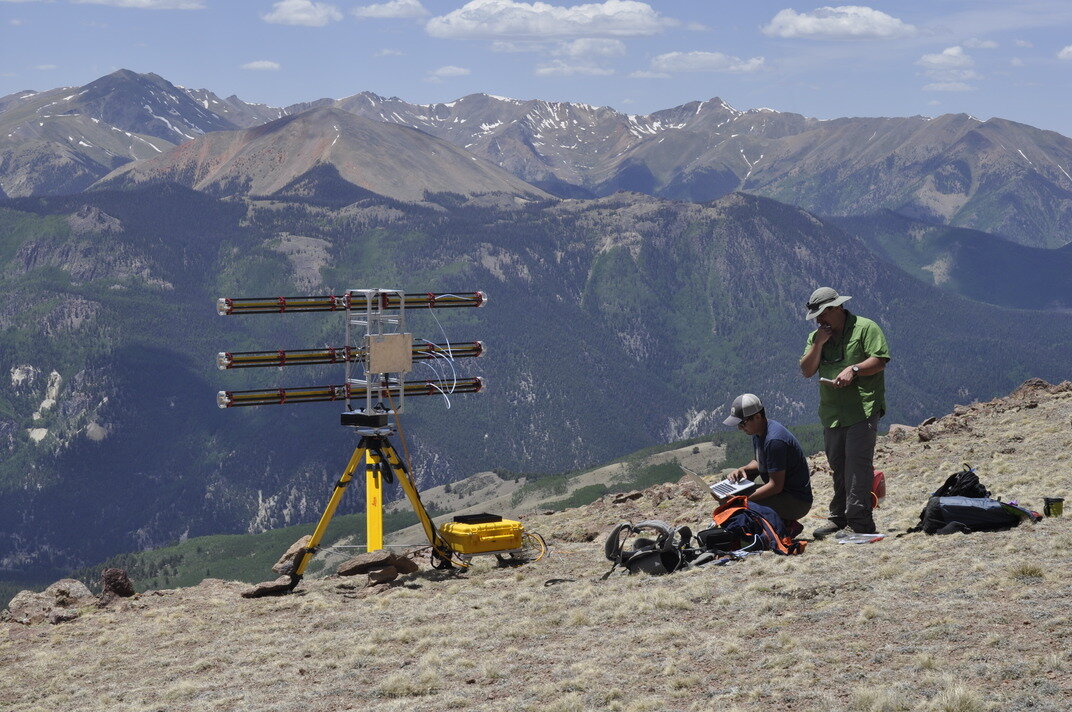My journey as a Geoscientist
I am a Research Scientist in the Cooperative Institute for Research in Environmental Science’s (CIRES) Earth Science Observation Center (ESOC), My research utilizes remote satellite and terrestrial based remote sensing observations to glaciers and glacier dynamics, wildfires, tsunamis and landslides.
(Figure) Performing terrestrial radar interferometric scans of the Slumgullion Landslide in Southwest Colorado.
As a graduate student, my research focused on tidewater glaciers in Greenland and Alaska. In particular, I used a terrestrial radar interferometer (TRI) to characterize and understand how short term perturbations at the ice-ocean boundary affected ice dynamics along the terminus. I also used thermal infrared observations of the sea surface to assess how variations in winter ice melange impacted calving and the seasonal location of glacier calving fronts.
(Figure) Conducting TRI scans with Dr. Martin Truffer along Kangiata Nunaata Sermia, Greenland
My path into the geosciences and remote sensing was amalgamation of passion and undergraduate training in electronic engineering and my fascination with the natural environment. A mid-winter trip to Yellowstone National Park in 2006 forever changed my career path. I began researching geophysical careers and entered graduate school soon after, charting a new path into glaciology and remote sensing.
(Figure) Appreciating the beauty of a geothermal feature during a day of skiing in Yellowstone Park.
I wasn’t always a Geoscientist. Prior to graduate school, I worked as an Electromagnetic Compatibility (EMC) Engineer for several years. My job was to ensure that the unintended electromagnetic ‘noise’ generated in telecommunication, biomedical, and satellite communication equipment systems did not interfere with instrument functionality.
(Figure) Preparing a satellite communication system for EMC testing in a semi-anechoic chamber.
Awards
CIRES Outstanding Performance Award (OPA) - 2020
University of New Hampshire Graduate Student Research Award - 2017
American Geophysical Union’s Outstanding Student Paper Award (OSPA) - 2015



